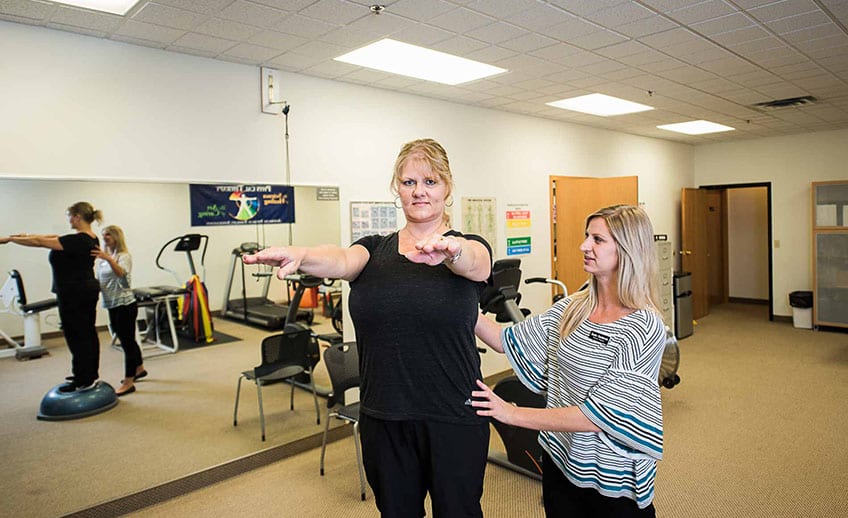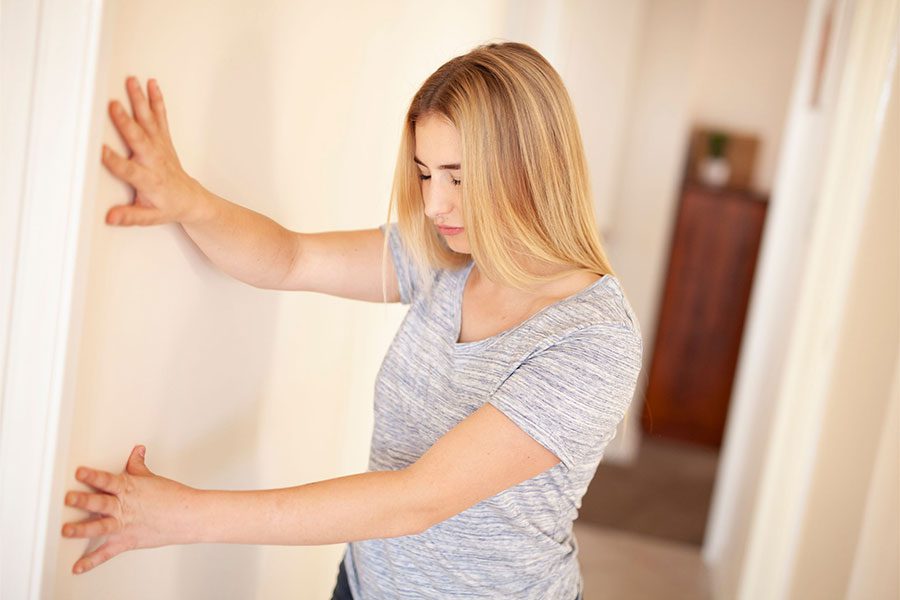Saunders physical therapists perform a detailed evaluation that can help distinguish between the many potential causes of dizziness (vertigo), balance problems, and related symptoms like nausea and light-headedness. At its best, vertigo is extremely annoying. At its worst, it can lead to a serious fall.
Physical therapy can be an effective treatment for vertigo, especially when the condition is caused by certain types of vestibular disorders. Vestibular disorders affect the inner ear, which is responsible for balance and spatial orientation. Physical therapy aims to help patients improve balance, reduce dizziness, and manage vertigo symptoms. The type of physical therapy used for vertigo is called vestibular rehabilitation therapy (VRT). VRT involves specific exercises and techniques to promote adaptation and compensation for the dysfunction in the vestibular system. Here are some common components of VRT:
VRT Physical Therapy For Dizziness and Vertigo
Gaze stabilization exercises: These exercises involve focusing on a fixed object while moving the head. This helps train the brain to stabilize vision during head movements, reducing dizziness.
Balance exercises: Patients may practice standing on different surfaces or perform specific movements to improve their balance and reduce the risk of falls.
Habituation exercises: These exercises involve repeated movements that provoke dizziness to help the brain adapt and become less sensitive to the triggering movements over time.
Brandt-Daroff exercises: These are a set of exercises used to treat benign paroxysmal positional vertigo (BPPV), a common type of vertigo caused by loose calcium crystals in the inner ear.
Canalith repositioning maneuvers: These maneuvers are used specifically for BPPV and involve guiding the loose calcium crystals out of the affected inner ear canal.
Vestibular ocular reflex (VOR) exercises: These exercises focus on improving the coordination between eye movements and head movements to enhance gaze stability during motion.

It’s important to remember that physical therapy for vertigo should be performed under the guidance of a trained physical therapist. The specific exercises and techniques used by your Saunders physical therapist will depend on the underlying cause of the vertigo and your unique condition. Additionally, not all cases of vertigo can be treated with physical therapy. Some cases may require medical intervention or other forms of treatment, but Saunders Therapy Centers is a great place to start in your journey toward an accurate diagnosis and appropriate treatment plan.





